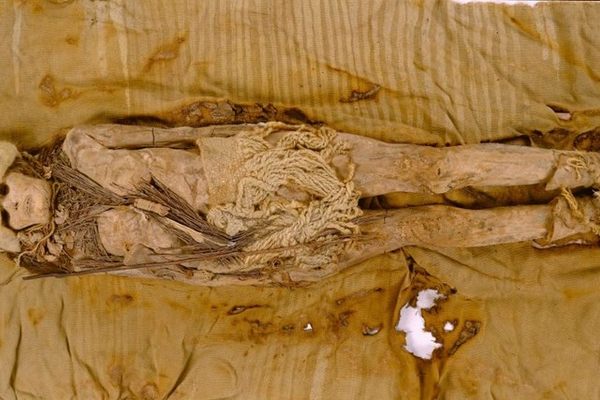The Complicated Technology Revealing the Secrets Behind Ancient Mummy Portraits

A Fayum mummy portrait. Almost 1,000 mummy portraits have been discovered in Fayum. (Photo: Public Domain/Wikipedia Commons)
Roman-era Egyptian mummy portraits were first unearthed over a century ago, but we’re just now learning the secrets behind how these paintings were made, and who might have painted them. Through a combination of science and complex new technologies, researchers recently revealed how they spent years tracking the portraits’ clues to advance latter-day understanding of the panels.
The lifelike portraits, created between 100 and 300 AD, were painted onto wooden panels that were then attached to mummies. The panels, antecedents of modern Western portraiture, were excavated by British archaeologists between 1899 and 1900 in Tebtunis, located in the modern-day Fayum, though they went unstudied for decades.
Over the past two years, researchers at Northwestern University have been using a variety of technologies to determine how 15 of the panels were made, including high-tech cameras and the removal of micro-chips of paint for closer study. Using an imaging algorithm, the team obtained measurements that showed brushstrokes and tool marks, while other methods revealed the order in which the pigments were applied, as well as the sources of the materials used. Three of the panels were likely created by the same artist, researchers concluded, while other discoveries revealed the evolving techniques of Byzantine artists.
“Our materials analysis provides a fresh and rich archaeological context for the Tebtunis portraits, reflecting the international perspective of these ancient Egyptians,” said Marc Walton, who led the team of researchers. “For example, we found that the iron-earth pigments most likely came from Keos in Greece, the red lead from Spain and the wood substrate on which the portraits are painted came from central Europe. We also know the painters used Egyptian blue in an unusual way to broaden their spectrum of hues.”
Nearly 1,000 of the portraits survive. Researchers have said that the portraits likely depict priests, upper class merchants and elite members of the military, beneficiaries of ancient Egypt’s flourishing economy in the first centuries of the Common Era. The portraits aren’t nearly as ornate as King Tut’s mask, of course, but, for many Egyptians, they might have been the next best thing.







Follow us on Twitter to get the latest on the world's hidden wonders.
Like us on Facebook to get the latest on the world's hidden wonders.
Follow us on Twitter Like us on Facebook